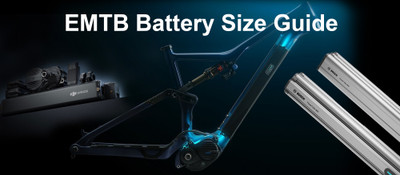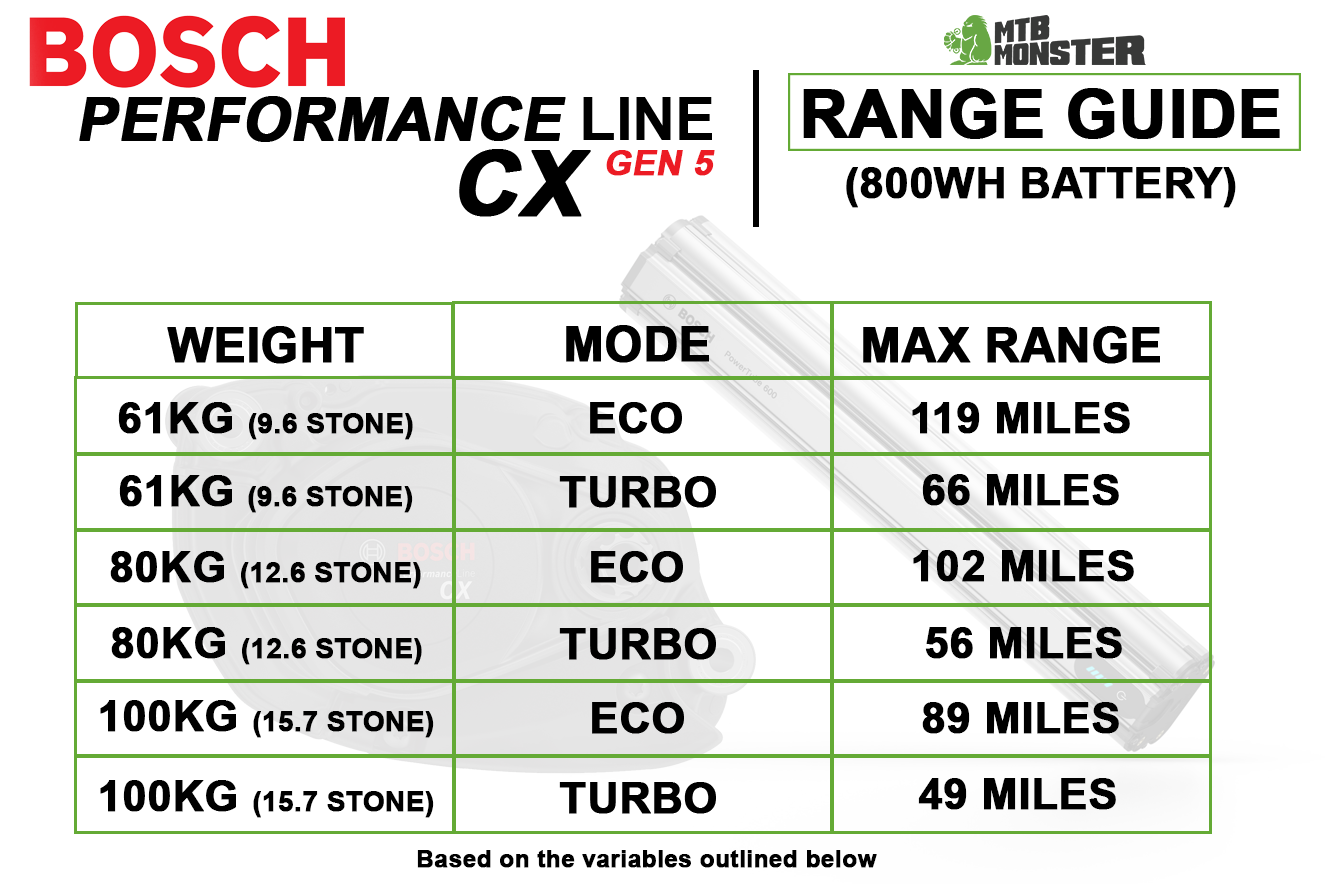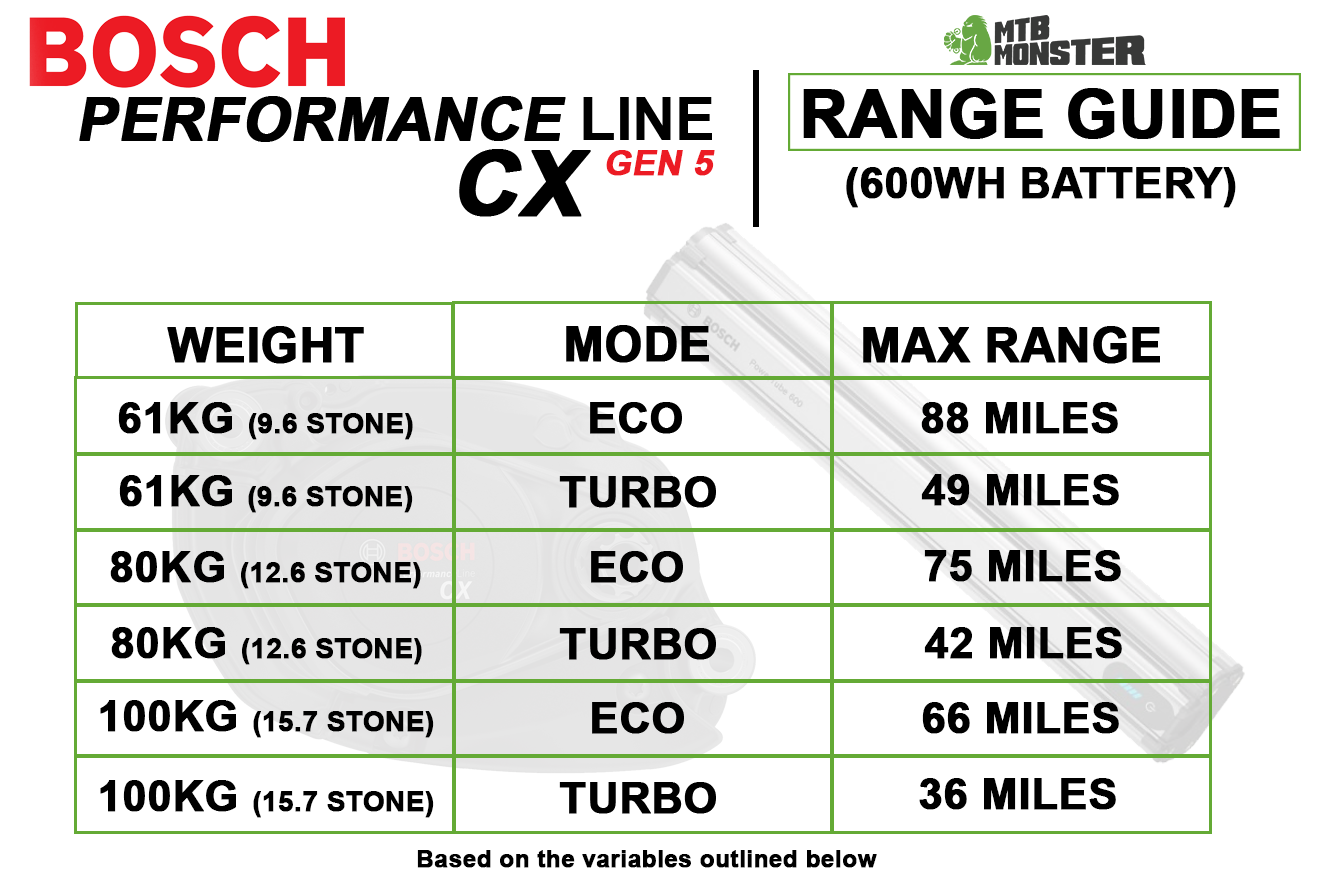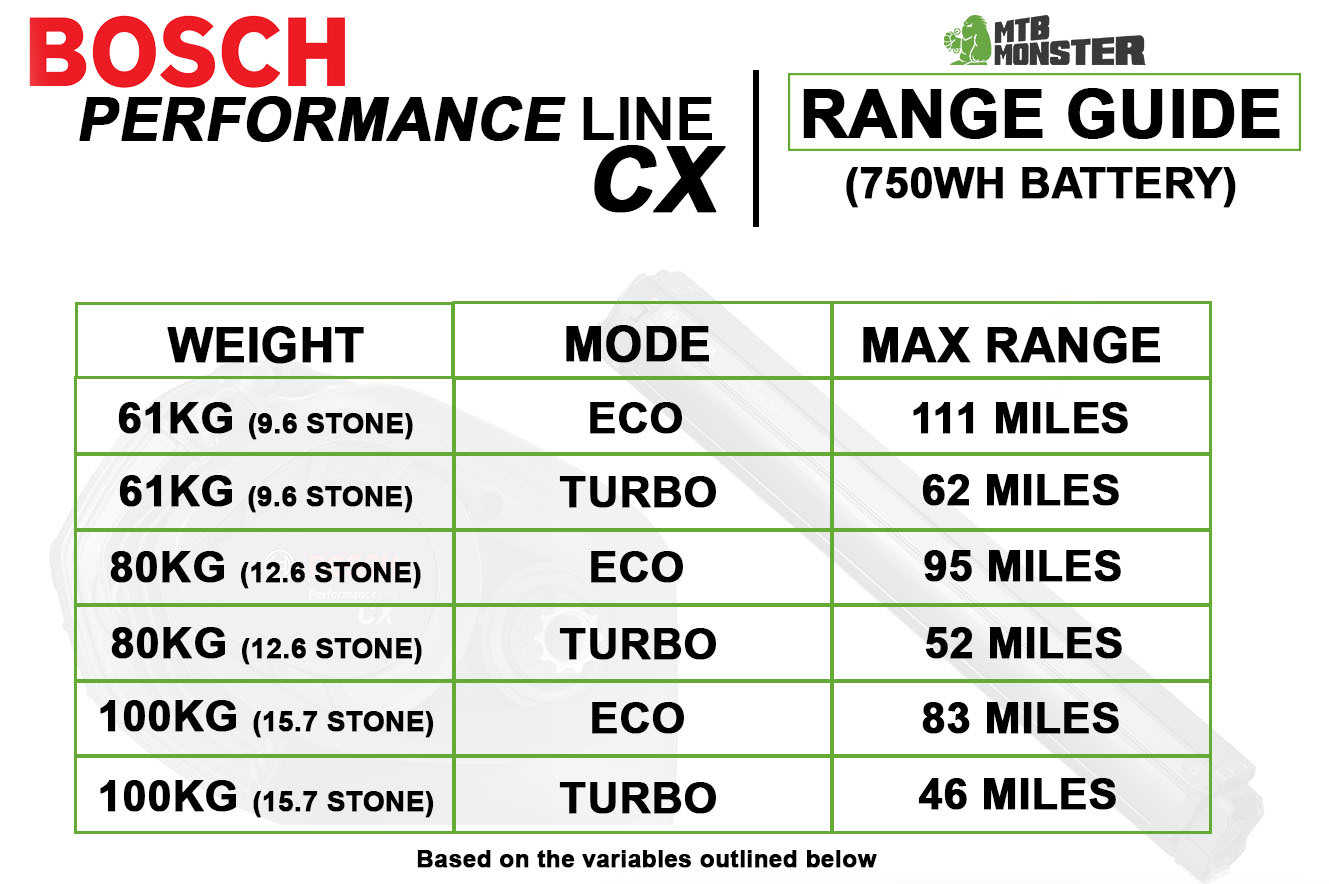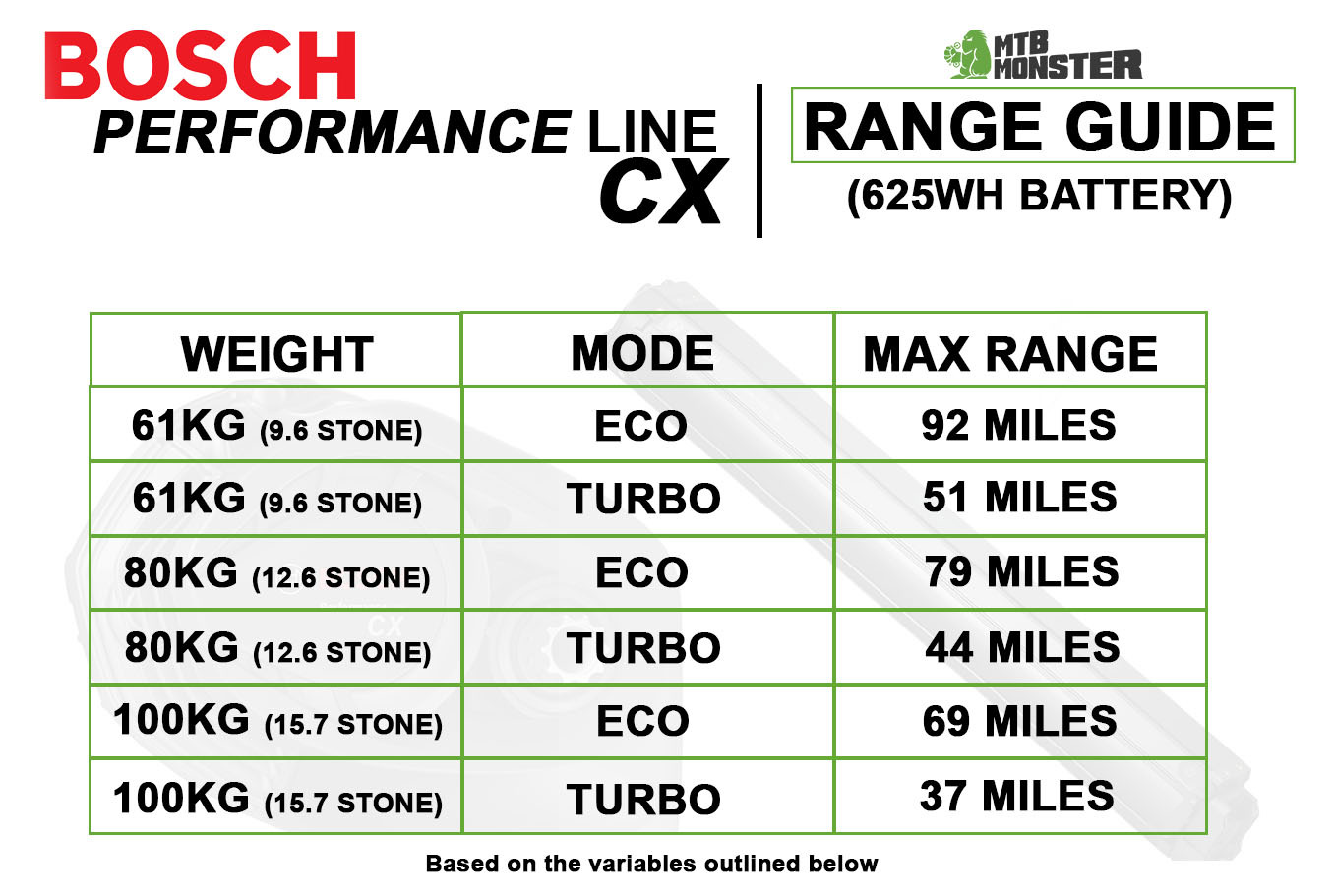Posted by Paul Hoyle on 15th Oct 2025
EMTB Battery Size Guide
Batteries are the source of power for your electric bike. Electric bike batteries come in various sizes and Watt-hour (WH) capacities. Watt-hours is a unit of energy commonly used to measure the capacity of e-bike batteries. It essentially tells you how long the battery can power the bike before it needs to be recharged… The larger the number the longer it will last. This guide will cover important questions to consider when choosing an e-bike battery.
Important questions to note when choosing an electric bike battery.
1 - Your rider weight?
Your body weight is a key factor to consider when choosing an electric bike battery. Simply due to the fact the motor will have to use more power from the battery to move more weight on the trails. If you are larger in stature it's probably worth considering a larger battery.
2 - Who are you riding with?
- Riding with other e-MTB riders:
If your friend or group uses e-bikes fitted with larger batteries (600Wh and up), aim to choose a battery within ~200Wh of theirs. A much smaller battery will leave you conserving power in lower modes while they continue in higher modes, which can make it harder to keep pace and reduce overall enjoyment. - Riding with mechanical (non-electric) bikes:
A smaller battery may be enough, since your pace is more likely to match theirs naturally. Fitness and rider weight will determine whether you need more capacity, but in most cases, a compact battery is capable of covering the typical distances carried out by mechanical riders. - Riding solo:
Your battery size depends entirely on your goals. If you want long days in the saddle or 18 mile+ rides, and not be too conservative in the power modes, a bigger battery is better suited. For short rides, or if you’re never far from a charger, a smaller, lighter option will do. - Fitness differences:
Your physical condition and relative fitness also play a role. Riders with higher fitness levels may get away with smaller batteries, as they can make up for reduced assistance by pedalling harder. But if you’re riding with fitter riders, a smaller battery can leave you constantly working harder and worrying about range.
3 - What characteristics do you value from your bike?
It's no secret opting for a larger battery size will impact an EMTB's handling and agility on the trails. So it's important to consider what you value from your time spent in the saddle. If you prefer your bike to be poppy and agile on the descents, a smaller lighter battery powering will likely fulfil your needs. However if you are simply looking for a bike to deliver maximum range enjoy a stable planted feel through rough terrain, a larger battery is likely better suited to your needs.
Bosch
| Model | Capacity | Weight | Range | Best For |
|---|---|---|---|---|
| CompactTube 400 | 400 Wh | 2.0 kg | up to 45 mi | Lightweight builds (often with SX motor); short rides, pairs well with range extender. |
| PowerTube 500 | 500 Wh | 2.99 kg | up to 55 mi | Hardtails, daily rides, and moderate-distance tours. |
| PowerTube 600 | 600 Wh | 3.0 kg | up to 68 mi | New for 2024 – lighter design, balanced range and agility. |
| PowerTube 625 / 750 | 625–750 Wh | 3.6–4.6 kg | up to 80 mi | Proven long-range batteries; heavier but reliable. |
| PowerTube 800 | 800 Wh | 3.9 kg | up to 100 mi | Flagship capacity, ideal for full-day mountain or touring rides. |
| PowerMore 250 | 250 Wh | 2.19 kg | + 25–30 mi | Range extender; compact bottle-mount format. |
Bosch CX 800Wh Battery Expected Range
Bosch CX 600Wh Battery Expected Range
Bosch CX 750Wh Battery Expected Range
Bosch CX 625Wh Battery Expected Range
Shimano
| Model | Capacity | Weight | Range | Best For |
|---|---|---|---|---|
| BT-E8014 | 418 Wh | ~2.7 kg | up to 50 mi | Shorter rides, commuters, or older E6000/E7000 builds. |
| BT-E8010 | 504 Wh | ~2.9 kg | up to 62 mi | Trail and XC bikes needing quick battery swaps. |
| BT-E8035 / E8035-L | 504 Wh | ~2.9 kg | up to 62 mi | Integrated battery for cleaner look and lower center of gravity. |
| BT-E8016 | 630 Wh | ~3.5 kg | up to 78 mi | Long-range external pack for touring or high-assist modes. |
| BT-E8036 | 630 Wh | ~3.6 kg | up to 81 mi | Integrated high-capacity option for all-mountain and enduro. |
DJI (Amflow)
| Model | Capacity | Weight | Range | Best For |
|---|---|---|---|---|
| DJI Avinox 800wh | 800 Wh | ~3.74 kg | up to 98 mi | Flagship capacity, ideal for full-day mountain or touring rides. |
TQ
| Model | Capacity | Weight | Range | Best For |
|---|---|---|---|---|
| V01 | 250 Wh | ~1.46 kg | up to 31 mi | Minimal assist, urban/light trail builds. |
| V03 | 290 Wh | ~1.46 kg | up to 37 mi | Compact pack for HPR60 systems; agile trail rides. |
| Standard (HPR50/60) | 360 Wh | ~1.83 kg | up to 50 mi | Balanced setup for trail/all-round e-MTBs. |
| High-Capacity | 580 Wh | ~2.7 kg | up to 75 mi | Long-range enduro or all-day rides. |
| Range Extender | 160 Wh | ~0.96 kg | + 18–30 mi | Bottle-mount add-on; charges simultaneously when connected. |
Fazua
| Model / System | Capacity | Weight | Approx. Range* | Best For |
|---|---|---|---|---|
| Ride 50/ Evation | ~252 Wh (Evation / older systems) | ~1.4 kg | ~20–50 mi | Lightweight builds, minimal assist, road / mixed use. |
| Ride 60 (Energy 430 / 480 Wh) | 430 Wh (or 480 Wh version) | ~2.30 kg / ~2.40 kg | ~50–87 mi | Versatile trail / e-MTB / light all-rounder use. |
Please note: This guide by MTB Monster is designed to help you understand the technical aspects of bike components. The information is drawn from industry knowledge and the experience of our team. While we strive for accuracy and unbiased comparisons, occasional errors or updates may occur. We always recommend doing your own research before making a final purchase decision.
Need any further help in choosing your next bike? Drop us a line on 01254 959345, or alternatively fill out the form below. We’d be glad to help.
